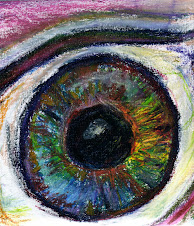Monday, October 26, 2009
For Teachers About Learning & Vision
Teachers should be the first line of intervention when one of their students has a learning-related vision problem since they get to see the children at work every day. When a student covers one eye or puts their head down so that only one eye points towards the text or paper, the teacher should recognize that this child needs to see an eye doctor to rule out amblyopia, or problems teaming the eyes to keep a word or other image single. When a student squints or complains of having a headache often during school - especially when asked to copy work from the board or smart-board to a piece of paper on their desk, the teacher should suggest that the student's parent make an eye appointment to make sure that the child knows how to accommodate i.e. switch their focus from near to far and back again efficiently. When a student cannot line up the digits in a math problem or appropriately space words on their paper, the teacher should first offer some practical hints but if these do not seem to help, it is time for a referral to an eye doctor to make sure that the child's eye movements and visual perceptual skills are developing on schedule. When a student makes frequent reversals when reading or writing - especially after the second grade, this may be a visual spatial delay in the skills of laterality and directionality. Finally, when a student has trouble in PE or on the playground catching or aiming balls or, in general, has under-performing gross motor skills, the root of the problem could the visual-motor-integration. While each of these symptoms can make success in school very difficult, all of them can be addressed by a few weeks or months of in-office vision therapy under the supervision of a developmental optometrist. No child should be left behind in school because of addressable learning-related vision problems.
Subscribe to:
Post Comments (Atom)





No comments:
Post a Comment